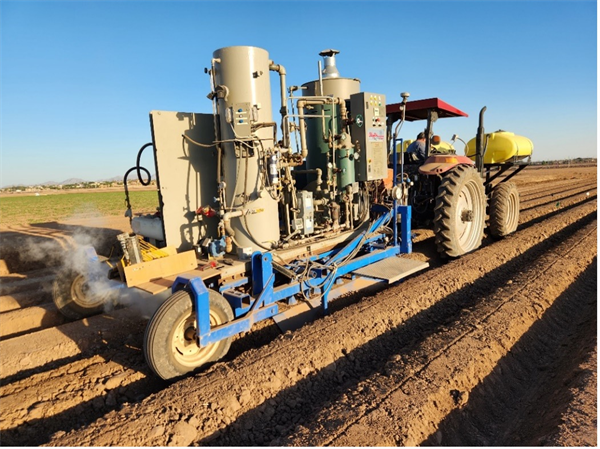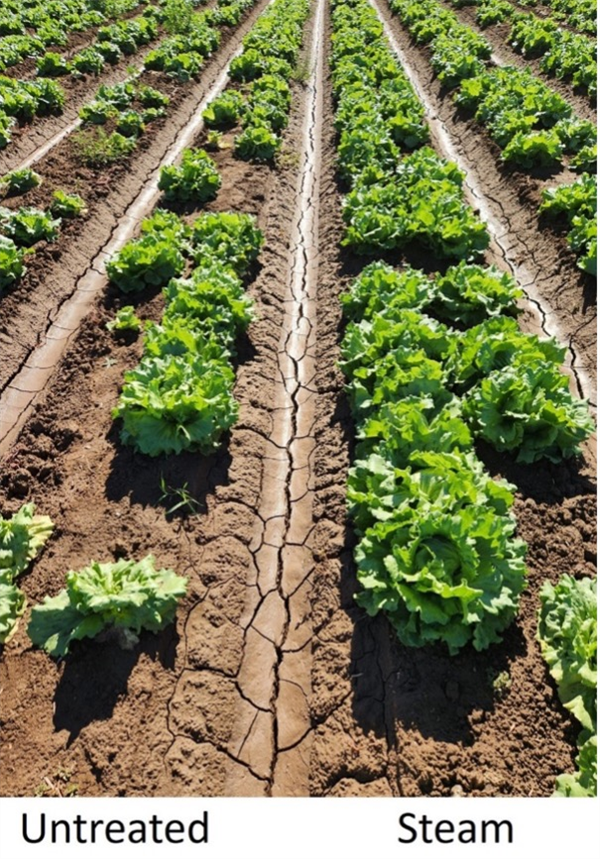
I hope you are frolicking in the fields of wildflowers picking the prettiest bugs.
I was scheduled to interview for plant pathologist position at Yuma on October 18, 2019. Few weeks before that date, I emailed Dr. Palumbo asking about the agriculture system in Yuma and what will be expected of me. He sent me every information that one can think of, which at the time I thought oh how nice!
When I started the position here and saw how much he does and how much busy he stays, I was eternally grateful of the time he took to provide me all the information, especially to someone he did not know at all.
Fast forward to first month at my job someone told me that the community wants me to be the Palumbo of Plant Pathology and I remember thinking what a big thing to ask..
He was my next-door mentor, and I would stop by with questions all the time especially after passing of my predecessor Dr. Matheron. Dr. Palumbo was always there to answer any question, gave me that little boost I needed, a little courage to write that email I needed to write, a rigid answer to stand my ground if needed. And not to mention the plant diagnosis. When the submitted samples did not look like a pathogen, taking samples to his office where he would look for insects with his little handheld lenses was one of my favorite times.
I also got to work with him in couple of projects, and he would tell me “call me John”. Uhh no, that was never going to happen.. until my last interaction with him, I would fluster when I talked to him, I would get nervous to have one of my idols listening to ME? Most times, I would forget what I was going to ask but at the same time be incredibly flabbergasted by the fact that I get to work next to this legend of a man, and get his opinions about pest management. Though I really did not like giving talks after him, as honestly, I would have nothing to offer after he has talked. Every time he waved at me in a meeting, I would blush and keep smiling for minutes, and I always knew I will forever be a fangirl..
Until we meet again.
In a prior article (Vol. 14, Issue 19), I discussed the initiation of a fall 2023 trial examining the use of band steam for controlling Fusarium wilt of lettuce. Again, the premise behind the research is to use steam heat to raise soil temperatures to levels sufficient to kill soilborne pathogens. For Fusarium oxysporum f. sp. lactucae (FOL) the pathogen which causes Fusarium wilt of lettuce, the required temperature for control is generally taken to be > 140°F for 20 minutes. Soil solarization, where clear plastic is placed over the crop bed during the summer, exploits this concept. The technique raises soil surface temperatures to 150-155˚F, effectively killing the pathogen and reducing FOL disease incidence by 45-98% (Matheron and Porchas, 2010).
In our trials, we used steam heat to raise soil temperatures. Steam was delivered by a 35 BHP steam generator mounted on a custom designed elongated bed shaper (Fig. 1). As the device traveled through the field, steam was injected into the soil in narrow bands centered on the seedline. Four band sizes ranging from 4” wide x 2” deep to 6” wide by 4” deep were examined to determine the optimal width and depth of the band of soil that needs to be disinfested to prevent disease. Travel speed was 0.2 mph and soil temperatures were raised to about 190°F. After cooling (< ½ a day), the crop (FOL susceptible iceberg lettuce variety El Guapo) was planted into the disinfested soil.
Preliminary results are very encouraging (Table 1, Fig. 2). The percentage of diseased plants was roughly four times lower in steam treated plots as compared to the untreated plots at the first evaluation date, 39 days after planting (DAP) (19% vs ~ 5%), and about two times lower at the second evaluation date, 60 DAP (32% vs ~17%). These results are consistent with our previous studies which showed that in soils that have moderate FOL inoculum levels, steam treatment reduced disease incidence at maturity by more than 40%. A surprising result was that the width and depth of soil steam treatment did not have a significant effect on disease incidence. A logical explanation for this result could not be formulated as one would expect disease incidence to be reduced if a larger volume of soil is disinfested.
Stay tuned for final trial results!
On a slightly different note, if you are interested in seeing the plots, I will be at the field site Field Day this Wednesday, November 30th from 8:00 am-12:00 pm. The location is the JV Farms Fusarium Trial site, located off of Hwy 95 and Ave 5E (32.6920898, -114.5395051).
Hope to see you there!
References
Matheron, M. E., & Porchas, M. 2010. Evaluation of soil solarization and flooding as management tools for Fusarium wilt of lettuce. Plant Dis. 94:1323-1328.
Acknowledgements
This project is sponsored by USDA-NIFA, the Arizona Specialty Crop Block Grant Program and the Arizona Iceberg Lettuce Research Council. We greatly appreciate their support.
A special thank you is extended to Fatima Corona, Pablo Delgado, Chad VanMatre, Matt McGuire and JV Farms for their generous assistance and allowing us to conduct this research on their farm.
|
Table 1. Effect of band-steam on Fusarium wilt of lettuce disease incidence in a trial conducted with iceberg lettuce in Yuma, AZ in 2023. |
||
|
|
----------------- Disease Incidence, % ----------------- |
|
|
Treatment1 |
39 DAP2 |
60 DAP |
|
Band-steam: 4”x2” |
2.4 |
17.5 |
|
Band-steam: 4”x4” |
5.0 |
15.0 |
|
Band-steam: 6”x2” |
8.5 |
22.4 |
|
Band-steam: 6”x4” |
3.8 |
16.4 |
|
Untreated |
19.2 |
32.1 |
|
1Dimensions for band-steam treatments indicate the width and depth of the band of soil that was treated with steam. |
||

Fig. 1. Band-steam applicator principally comprising a 35 BHP steam generator
mounted on a bed-shaper applicator sled. The device injects steam into the soil
as beds are formed.

Fig. 2. Fusarium wilt of lettuce control with band-steam in iceberg
lettuce. Steam was applied in a narrow band (4” wide x 4” deep)
centered on the seedline prior to planting. After the soil cooled (< 1/2
day), the crop was planted into the disinfested soil.
In the absence of Dacthal (DCPA) growers are looking for different herbicide options for Broccoli and Onions.
The following is data from a broccoli trial done in 2010 by Tickes/Pena, which compares Prowl, Goal Tender, Prefar, Treflan, Devrinol and Dacthal at different application timings. Plots were visually evaluated for weed control of Goosefoot (Chenopodium murale), Malva (Malva parviflora), and Yellow Sweet Clover (Melilotus oficinalis). The label recommendations for Devrinol are “Use the lower rate on light soil (coarse textured-sandy), and the higher rate on heavy soil (fine textured-clay)”. The rate goes from 1-2 lbs on the DF-XT 50% formulation.
We hope this information is useful in our decision making for broccoli herbicide programs.